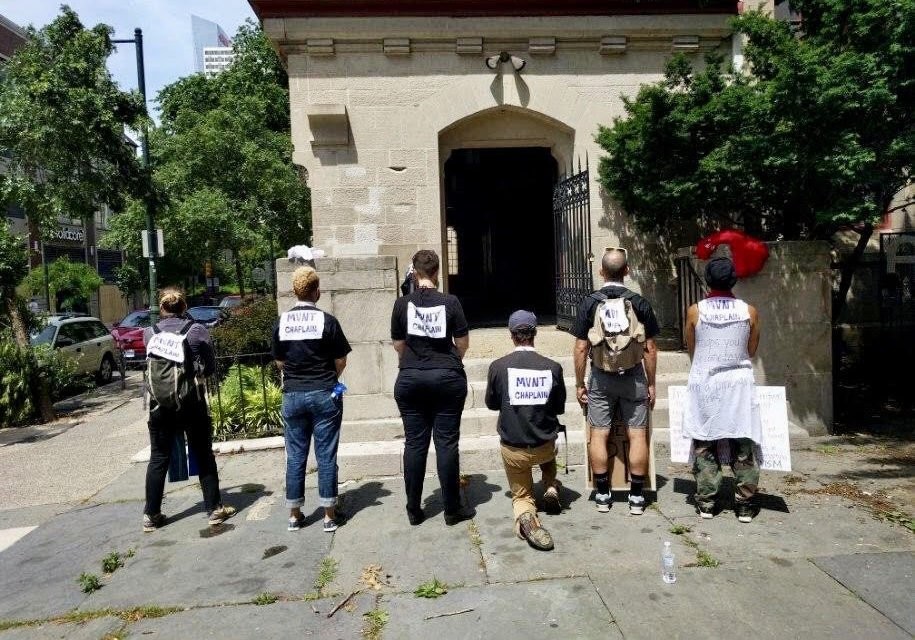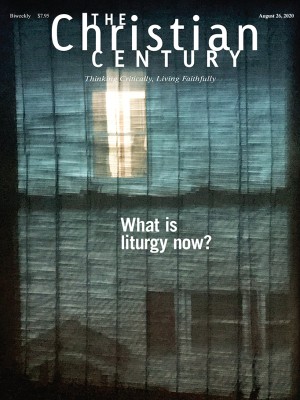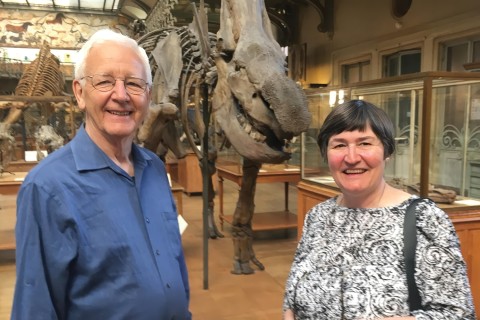Emerging ‘movement chaplains’ bring spiritual care to activists

Kimberly Jackson remembers the disappointment and devastation that erupted after the execution of Troy Davis nearly ten years ago in Jackson, Georgia.
Years of canvassing and protesting ended with activists weeping and embracing outside the prison after Davis was put to death by lethal injection. Davis, a black man who maintained his innocence, was on death row for two decades after being convicted of murdering a Savannah police officer.
During that time, Jackson, who was freshly ordained as an Episcopal priest, found herself serving as a spiritual companion to Davis’s supporters and those involved in the movement against the death penalty.
She did traditional clergy activities like leading a prayer vigil or a pray-in. A chaplain for Morehouse College, Spelman College, and Clark Atlanta University, she also guided students who sought to get involved in the cause.
After the execution, activists approached Jackson with urgent questions, asking her “Where do I find hope?” or “Why isn’t God doing something here?”
“These are folks who didn’t go to my church. Many of them don’t go to church at all, but they needed a person who they understood to be somehow connected to something much bigger,” said Jackson, now vicar of Church of the Common Ground.
Read our latest issue or browse back issues.
Jackson embodied an emerging vocational role that’s now being referred to as a “movement chaplain,” whose purpose is to provide spiritual and emotional care to activists and organizers before, during, and after demonstrations.
Chaplains—who perform ministerial duties apart from a house of worship—have long been familiar faces at airports, hospitals, colleges, military bases, and prisons. They do ministry in the midst of everyday life. In recent years, movement chaplains have become more visible in protests for immigrant rights, at rallies against white nationalist groups, and in demonstrations supporting the Black Lives Matter movement.
Movement chaplaincy, as Micky ScottBey Jones described it, is in the “lineage of something that has been happening for a long time.”
“We just didn’t have a name for it,” said ScottBey Jones, director of healing and resilience initiatives at Faith Matters Network, a Nashville-based group that equips faith leaders and community organizers with wellness resources.
ScottBey Jones has big aspirations for movement chaplains. She envisions students in divinity schools being ordained into the role. She’d also like to see grants made available to fund movement chaplain teams.
So far, more than 300 people have gone through movement chaplaincy training and workshops hosted by Faith Matters Network. The training involves people who are atheist, indigenous, Jewish, Buddhist, Christian, and Muslim.
Movement chaplains, ScottBey Jones said, differ from the protest chaplains who emerged during the Occupy Wall Street movement in 2011. They show up to protests, yes, but they also embed themselves in movements by attending meetings where organizers are planning the rallies. They’re at the side of activists after a demonstration to help them vent or debrief.
ScottBey Jones said this role is critical to address the “activist martyrdom syndrome” that can lead to compassion fatigue, health problems, burnout, and even suicide.
“We deal with the stress and the trauma that people go through when they engage oppressive forces,” ScottBey Jones said.
So far, clergy, lay leaders, and spiritual practitioners have been among those filling this chaplaincy role. Many are women or people who identify outside a gender binary.
To ScottBey Jones, these demographics make sense because they represent communities and identities on the front lines of disparities and discrimination.
Movement chaplains have been seen at protests wearing fluorescent vests or signs to identify their roles. In a recent demonstration in Philadelphia, a group pinned white patches on their backs with the words “MVNT CHAPLAIN.”
They’re not to be confused with other clergy at rallies who, ScottBey Jones said, tend to assume positions of authority by standing between police and protesters or even getting arrested in solidarity with activists.
Instead, movement chaplains help create ceremonies and prayers for protests and meetings. They offer bodywork and herbal remedies. They accompany people of all faiths and nonreligious people. They use spiritual practices, sacred texts, and physical comfort as ways to include healing in movement work.
“This is a way you can still offer support, love, and care without having to be that upfront and in-charge person,” ScottBey Jones said. “I think both are necessary.”
In Philadelphia, Margaret Ernst, an associate pastor at Chestnut Hill United Church, is working on building ties with activist groups who may be in need of chaplaincy care as they continue to organize around racial justice and the movement to defund police.
“Ideally, we believe it’s best when movement chaplains are in real, long-term relationships with people who are leading protests,” she said.
Ernst, who also works for Faith Matters Network, said some organizers don’t know who chaplains are or what they do. She often describes her group of chaplains as “healing” or “care” teams that can help de-escalate any conflicts that may arise.
As she works to build those relationships, Ernst has found herself fulfilling varying roles as a movement chaplain. At one rally, Ernst wound up having to block a street so people could safely cross.
The way Ernst sees it, “I can’t care for people’s spiritual needs if they are not physically safe,” she said.
Recently, Ernst called an organizer who was behind a big rally in Philadelphia to introduce herself as a movement chaplain who was ready to serve.
“She was like, ‘Wow,’” Ernst said. “I could hear in her voice a sound of relief that ‘there are people out there who can just care about us as organizers and who we are in our fullness as humans.’” —Religion News Service




